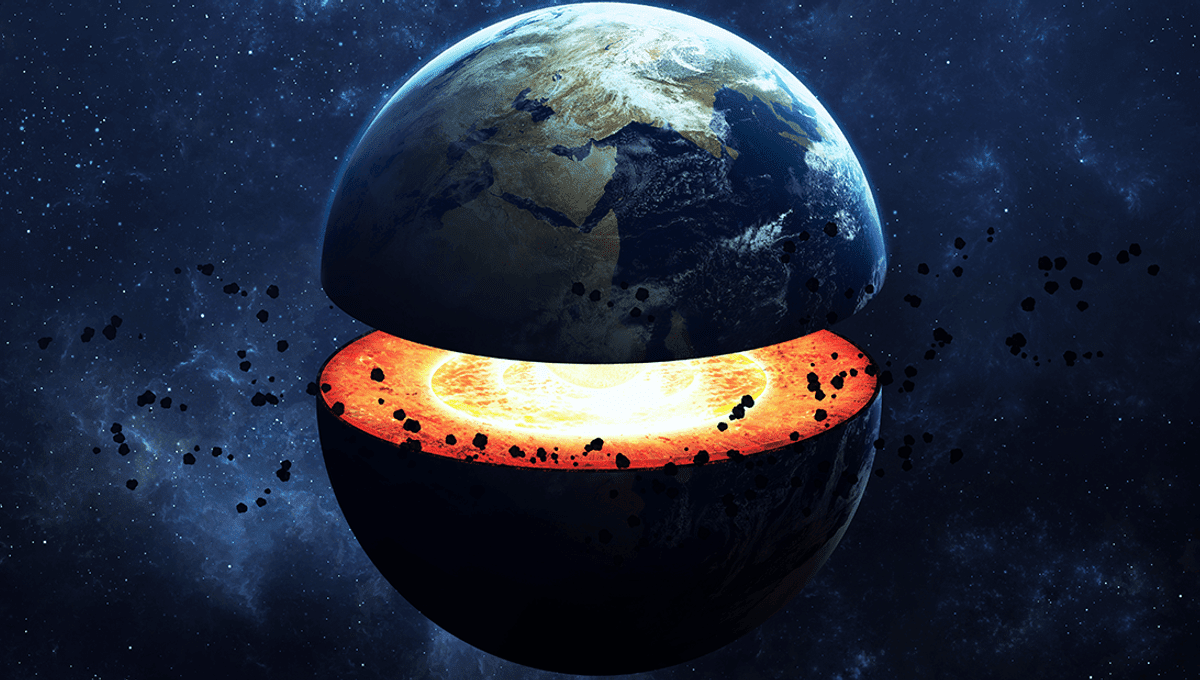
Here’s a fact that would make you sound unhinged if you shouted it in the street: The center of the Earth is two and a half years younger than the surface.
About 4.6 billion years ago, a hot cloud of dust orbiting the Sun coalesced and cooled. As it did so, the heavier elements formed the center of the Earth, while lighter elements formed the mantle, and the thin layer of crust formed on the surface. This all took place at the same time, with the minor caveat that Earth has accumulated more matter in the intervening years, including potentially from planet Theia, which may have formed the moon and left mysterious structures deep within the Earth. And yet now the center is younger than the outer bits. How?
A team of physicists calculated this strange fact in 2016. The team, who published their work in the European Journal of Physics, were aware that in the 1960s theoretical physicist Richard Feynman gave a lecture in which he stated, according to the possibly erroneous transcription, that the center of the Earth is “one or two days” younger than the surface because of the time-dilating effects of gravity. The team write that they had seen this claim repeated without being checked, likely due to “proof by ethos”, where a scientist’s status is so high that their results and calculations aren’t questioned.
“Scientists must to a large extent rely on the validation of other fellow’s work, and it happens to be a psychological default condition among many (scientists), that if a famous peer has publicly announced a result, it is accepted at face value,” the team wrote in their paper. “This seems also to be the situation in the case of the flawed estimate of the relativistic age of the Earth’s core.”
The team instead made their own calculations, looking at the effects of Earth’s variable gravity. According to general relativity, time moves slower in stronger gravitational fields. Given that objects with more mass have more gravity, and the heavy core is made of an iron-nickel alloy far denser than the surface, time moves slower near the center of the Earth. According to the team’s calculations, the difference is pretty minute. Nobody at the center of the Earth is going to notice a tiny fraction of a second missing for every year, especially given how hot they are.
However, over 4.6 billion years those fractions of seconds add up, with the team calculating that the center of the Earth is now about two and a half years younger than the surface, a sprightly ~4,599,999,999-year-old, a veritable child compared to the crust. Meanwhile, the Sun’s surface was calculated to be around 40,000 years older than its center.
The team point out that Feynman was ruthless in criticizing his own calculations, so likely would have been happy for the correction.
“In spite of the small numerical mistake, Feynman’s observation that the center of the Earth is younger than its surface is a fascinating demonstration of time dilation in relativity,” they concluded, “and as such a very illustrative example for use in the classroom.”
Source Link: The Center Of The Earth Is 2 Years Younger Than The Surface. It Wasn't When Earth First Formed